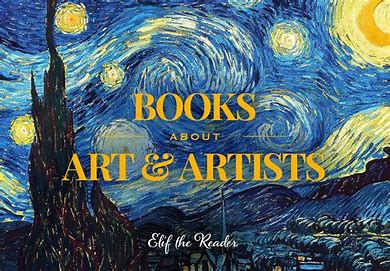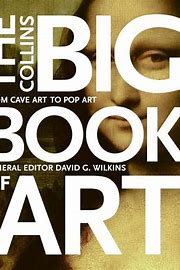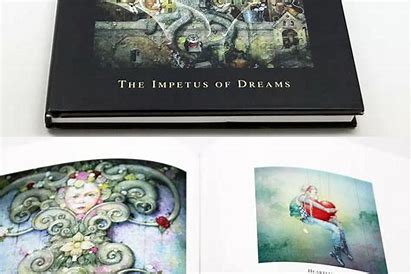Content Menu
● Understanding the Purpose of an Art Book
● Key Elements of a Great Art Book
>> High-Quality Images
>> Thoughtful Layout and Design
>> Engaging Textual Content
>> Unique Concept or Theme
>> Quality Materials
>> The Production Process
>> Concept Development
>> Curation of Artwork
>> Design and Layout
>> Printing Options
● Marketing Your Art Book
● Conclusion
● FAQ
>> 1. What should I consider when choosing images for my art book?
>> 2. How important is layout in an art book?
>> 3. Should I include text in my art book?
>> 4. What materials should I use for printing my art book?
>> 5. How can I market my art book effectively?
Creating an art book is a unique blend of artistic vision, technical skill, and thoughtful curation. A great art book does more than just display artwork; it tells a story, evokes emotions, and engages the reader in a multifaceted experience. In this article, we will explore the essential elements that contribute to the creation of a remarkable art book, discussing everything from concept development to design and printing.

Understanding the Purpose of an Art Book
Before diving into the specifics of what makes an art book great, it's crucial to understand its purpose. An art book can serve various functions:
- Showcase an Artist's Work: It can be a portfolio that highlights an artist's best pieces.
- Document a Series or Theme: It may focus on a particular series or theme, providing context and depth to the artwork.
- Educate and Inform: Some art books aim to educate readers about techniques, history, or movements within the art world.
- Create a Dialogue: An effective art book encourages conversation between the reader and the artwork, often through accompanying text or essays.
Key Elements of a Great Art Book
High-Quality Images
The heart of any art book lies in its images. High-resolution photographs are essential for accurately capturing colors, textures, and details of the artwork. Poor quality images can detract from even the most compelling pieces.
- Professional Photography: Invest in professional photography to ensure that each piece is represented in its best light.
- Image Selection: Curate images thoughtfully to create a cohesive narrative throughout the book. Each image should contribute to the overall theme or story being told.
Thoughtful Layout and Design
The design of an art book is as important as its content. A well-designed layout enhances the viewer's experience and allows the artwork to shine.
- White Space: Utilize white space effectively to avoid clutter and draw attention to the artwork.
- Page Flow: Consider how one page transitions into the next. The sequence should create a visual journey that guides readers through the book.
- Typography: Choose fonts that complement the artwork without overpowering it. The text should be legible and harmoniously integrated into the design.
Engaging Textual Content
While images are crucial, textual content can add significant value to an art book. This may include:
- Artist Statements: Personal insights from the artist can provide context and deepen the reader's understanding of their work.
- Essays and Interviews: Collaborating with critics or curators to include essays can enrich the narrative and provide different perspectives on the artwork.
- Captions: Brief captions can help identify pieces and offer additional information without overwhelming the reader with text.

Unique Concept or Theme
A great art book often revolves around a central concept or theme that ties everything together. This could be:
- A specific period in an artist's career
- A particular style or medium
- A thematic exploration of subjects like nature, urban life, or personal experiences
Having a clear focus helps readers connect with the content on a deeper level.
Quality Materials
The physical quality of an art book contributes significantly to its overall impact. Considerations include:
- Paper Quality: Use high-quality paper that enhances image reproduction. Glossy paper may be suitable for vibrant images, while matte paper can lend a more subdued aesthetic.
- Binding Options: Choose a binding style that suits your budget and vision. Hardcover books often convey a sense of permanence and quality, while softcover options may be more accessible.
The Production Process
Creating an art book involves several stages, from initial planning to final printing:
Concept Development
Start by brainstorming ideas for your art book. Consider your goals, target audience, and what you want to communicate through your work.
Curation of Artwork
Select pieces that best represent your artistic journey or align with your chosen theme. Aim for variety while maintaining coherence in style or subject matter.
Design and Layout
Work with a designer if possible to ensure that your vision is realized effectively. Pay attention to layout principles, including balance between images and text.
Printing Options
Research printing companies that specialize in high-quality art books. Discuss options for paper types, binding methods, and print runs based on your budget and goals.
Marketing Your Art Book
Once your art book is complete, it's time to think about marketing:
- Social Media Promotion: Utilize platforms like Instagram to showcase sneak peeks of your book and engage with potential readers.
- Art Fairs and Exhibitions: Participate in events where you can sell your book directly to interested audiences.
- Online Sales Platforms: Consider selling through your website or platforms like Etsy for broader reach.
Conclusion
A great art book is not just about showcasing beautiful images; it's about creating an immersive experience that resonates with readers on multiple levels. By focusing on high-quality images, thoughtful design, engaging text, a unique theme, and quality materials, artists can produce books that not only reflect their artistic vision but also inspire others.

FAQ
1. What should I consider when choosing images for my art book?
When selecting images for your art book, prioritize high-resolution quality that accurately represents your work. Consider how each image contributes to the overall narrative or theme of the book.
2. How important is layout in an art book?
Layout is crucial as it guides the reader's experience through visual flow and balance between images and text. A well-thought-out layout enhances engagement with the artwork.
3. Should I include text in my art book?
Including text such as artist statements or essays can provide valuable context for your artwork and enrich the reader's understanding of your creative process.
4. What materials should I use for printing my art book?
Opt for high-quality paper that enhances image reproduction—glossy for vibrant colors or matte for subtlety—and consider hardcover binding for durability and prestige.
5. How can I market my art book effectively?
Utilize social media platforms for promotion, participate in art fairs for direct sales opportunities, and consider online marketplaces like Etsy for wider distribution.
































